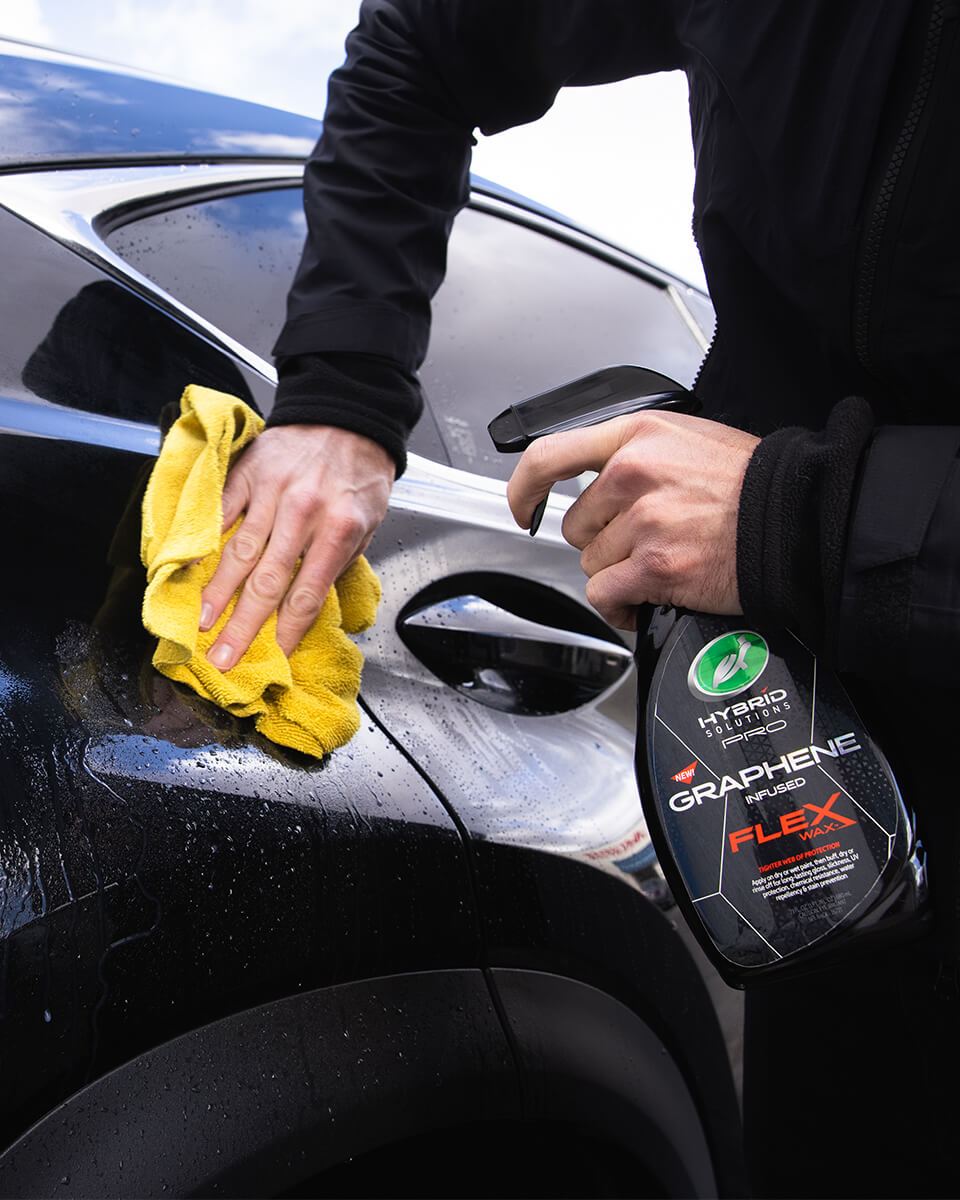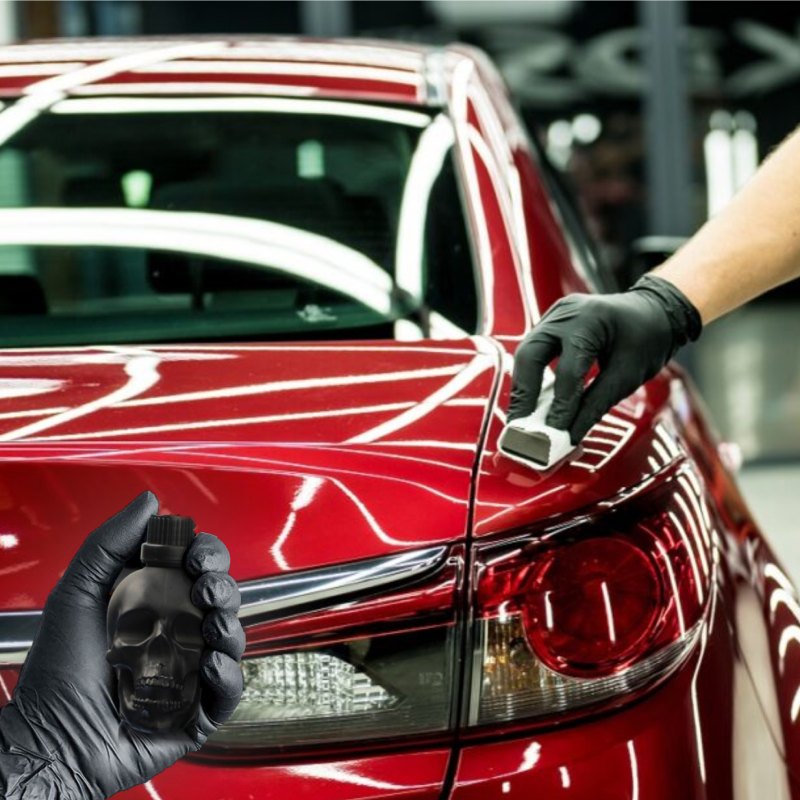Seven maintenance tips to make Ceramic Coating Newark last longer
Wiki Article
Exploring the Scientific Research Behind Car Ceramic Coating and Its Protective Characteristics
The science of car ceramic coating offers a fascinating study in innovative automobile security. Composed mostly of silicon dioxide and polymers, these coverings form a robust bond with vehicle paint. This interaction enhances sturdiness versus environmental risks while supplying hydrophobic benefits. The ins and outs of how these coatings work and their long-lasting benefits stay much less comprehended. Ceramic Coating Newark. Unboxing these details discloses why ceramic layers are ending up being a favored option for automobile treatmentWhat Is Ceramic Coating?
Ceramic coating is a liquid polymer that chemically bonds to the surface area of a vehicle's paint. This sophisticated protective layer improves resilience and uses exceptional resistance to ecological factors. Unlike conventional wax or sealants, which offer temporary security, ceramic layers produce a durable shield that can hold up against harsh problems such as UV rays, acidic impurities, and severe weather. When used appropriately, the coating creates a hydrophobic surface area, causing water to grain and slide off, which assists in preserving the car's sanitation. In addition, it supplies boosted gloss and depth to the paint, making the vehicle appear more refined and vibrant. The application process commonly includes comprehensive surface area prep work, including cleaning and sprucing up, to guarantee peak bonding. As an outcome, ceramic coatings are ending up being progressively preferred amongst car enthusiasts and those looking for to shield their financial investments, guaranteeing to keep the vehicle's visual charm while minimizing the regularity of upkeep.The Composition of Ceramic Coatings
The intricate solution of ceramic coverings primarily contains silicon dioxide (SiO2), which is stemmed from all-natural resources like quartz and sand. This vital part gives the structure for the coating's durability and safety top qualities. Along with SiO2, ceramic finishings usually include different polymers and additives that improve adhesion, versatility, and resistance to environmental variables. These substances work synergistically to create a robust barrier versus contaminants such as dirt, chemicals, and UV rays.Furthermore, some formulas incorporate titanium dioxide (TiO2) or other nanomaterials, which can enhance the coating's hydrophobic buildings, resulting in better water repellency. The specific structure can vary considerably among manufacturers, impacting performance and longevity. Eventually, the mix of these components finishes in a protective layer that not only enhances the visual charm of vehicles however additionally offers to extend their lifespan by shielding the surface area from prospective damages.How Ceramic Coatings Work
Recognizing how ceramic coverings function entails discovering their chemical structure, which adds to their protective high qualities. The application procedure is essential for achieving suitable outcomes, while longevity and resilience aspects figure out the coating's performance with time. With each other, these components highlight the advantages and efficiency of ceramic coverings for vehicle protection.Chemical Structure Explained
While lots of car proprietors look for long-lasting protection for their lorries, the chemical structure of ceramic coatings plays a vital function in their efficiency. These finishings mainly consist of silicon dioxide (SiO2), which is originated from all-natural minerals. This substance forms a strong bond with the vehicle's paint, creating a long lasting, safety layer. Furthermore, many ceramic coverings consist of titanium dioxide (TiO2), improving their hydrophobic homes and resistance to UV rays. The presence of polysiloxanes can even more improve adaptability and resilience. Together, these components contribute to the coating's capability to fend off water, dust, and contaminants, while also providing a high-gloss surface. Understanding this chemical foundation assists car owners appreciate the durable security offered by ceramic coverings.Application Refine Summary
Using ceramic finishes involves a thorough procedure that ensures ideal bonding and defense for the vehicle's surface area. Initially, comprehensive cleansing and purification of the car's exterior are executed to get rid of dust, gunk, and previous waxes. This step validates that the surface is cost-free from contaminations that might hinder adhesion. Following this, the paint is typically brightened to enhance clarity and get rid of any imperfections. When prepared, the ceramic coating is applied in small sections making use of an applicator pad, enabling uniform insurance coverage. The coating is after that entrusted to treat, creating a solid chemical bond with the surface area. Correct treating times and conditions are important, as they validate the coating attains its optimum efficiency and safety qualities.Durability and Resilience Aspects
Ceramic coverings are designed to offer lasting security through their sophisticated chemical make-up, which develops a robust obstacle against ecological contaminants. The sturdiness of these finishings is affected by aspects such as the thickness of the application, the quality of the product, and the conditions under which the lorry is subjected. High-quality ceramic finishings can last several years, standing up to scrapes, UV rays, and chemical discolorations. Proper maintenance, including normal washing and regular reapplication, can additionally boost long life. Additionally, ecological variables like environment and direct exposure to contaminants can influence the lifespan of the coating. Generally, when used and preserved appropriately, ceramic coverings provide extraordinary resilience, making them a popular selection for car lovers looking for to protect their lorry's appearance.Hydrophobic Residences and Water Repellency
Hydrophobic buildings are a hallmark of quality car ceramic coatings, significantly boosting the automobile's surface efficiency. These coatings produce a molecular bond with the car's paint, leading to a surface area that pushes back water efficiently. When water enters call with a ceramic-coated surface, it beads up and rolls off, minimizing the quantity of fluid that continues to be on the paint. This behavior not only adds to a visually pleasing look but additionally decreases the accumulation of impurities such as dirt, crud, and roadway salts.The improved water repellency results in simpler cleansing and upkeep, as much less effort is called for to remove undesirable compounds. Furthermore, the hydrophobic nature of ceramic coatings assists in preventing water places, which can mar the coating of uncoated surface areas. On the whole, the unification of hydrophobic homes in ceramic finishes plays a necessary duty in keeping the vehicle's excellent look while simplifying maintenance.Security Against Scratches and UV Damages
Car ceramic finishes offer substantial protection against scrapes and UV damage. The scratch resistance mechanism develops a durable layer that takes in influences, while the UV protecting benefits aid keep the automobile's paint honesty with time. Together, these attributes add to resource a longer-lasting and visually enticing surface.Scrape Resistance Device
Utilizing advanced modern technology, ceramic coatings supply a robust shield versus scratches and UV damages, boosting the longevity and appearance of lorry surface areas. The scratch resistance mechanism of these coatings is attributed to their one-of-a-kind molecular framework, which develops a resilient bond with the automobile's paint. This bond creates a hard, safety layer that can absorb impacts and resist abrasions. Additionally, the smooth surface of the coating reduces friction, making it challenging for contaminants to adhere and create scrapes. The chemical make-up of ceramic finishes frequently consists of nanoparticles that strengthen the safety layer, more enhancing its durability. Lorries treated with ceramic finishes display considerably enhanced scrape resistance compared to standard wax or sealers, making certain an immaculate surface over time.UV Shielding Perks
The safety qualities of ceramic coatings prolong past scrape resistance to include significant UV securing advantages. These coverings create a robust obstacle that shows harmful ultraviolet rays, safeguarding the vehicle's paint and underlying materials. Extended exposure to UV radiation useful site can lead to fading, oxidation, and wear and tear of the paint finish. By incorporating ceramic finishings, vehicle proprietors can effectively alleviate these risks, maintaining the visual charm and honesty of their vehicles. Additionally, the UV obstructing properties contribute to boosted longevity, reducing the regularity of painting and upkeep. Inevitably, the integration of ceramic layers provides an extensive solution for shielding cars from the destructive effects of sun exposure, guaranteeing a continual, vibrant look in time.The Long life and Upkeep of Ceramic Coatings

Often Asked Questions
Can Porcelain Coating Be Applied to Any Kind Of Type of Car?
Ceramic coating can be used to numerous kinds of vehicles, consisting of automobiles, trucks, and motorcycles. Surface prep work and compatibility with particular materials are crucial for excellent bond and effectiveness of the coating.Exactly How Much Does Ceramic Coating Typically Expense?
Ceramic coating commonly costs between $500 and $2,000, depending on aspects such as lorry size, coating top quality, and professional application. The financial investment can offer lasting defense and improve the car's appearance over time.
Is Specialist Application Essential for Finest Results?
The necessity of professional application frequently depends upon desired outcomes. Experts generally ensure correct surface prep work and application strategies, leading to ideal bonding and durability of the coating, which may be challenging for unskilled people to accomplish.Can Ceramic Coatings Be Removed or Repaired?
Ceramic coverings can be eliminated or repaired, though the procedure might need certain solvents or strategies - Ceramic Coating Newark. Proper removal is important to avoid damages to the underlying surface, highlighting the value of specialist help for excellent outcomesJust How Does Ceramic Coating Compare to Conventional Wax?
The contrast between ceramic coating and traditional wax reveals that ceramic finishings use exceptional longevity, boosted security versus environmental contaminants, and longer-lasting luster, while wax needs extra regular application and provides much less overall resistance see here now to damages.Report this wiki page